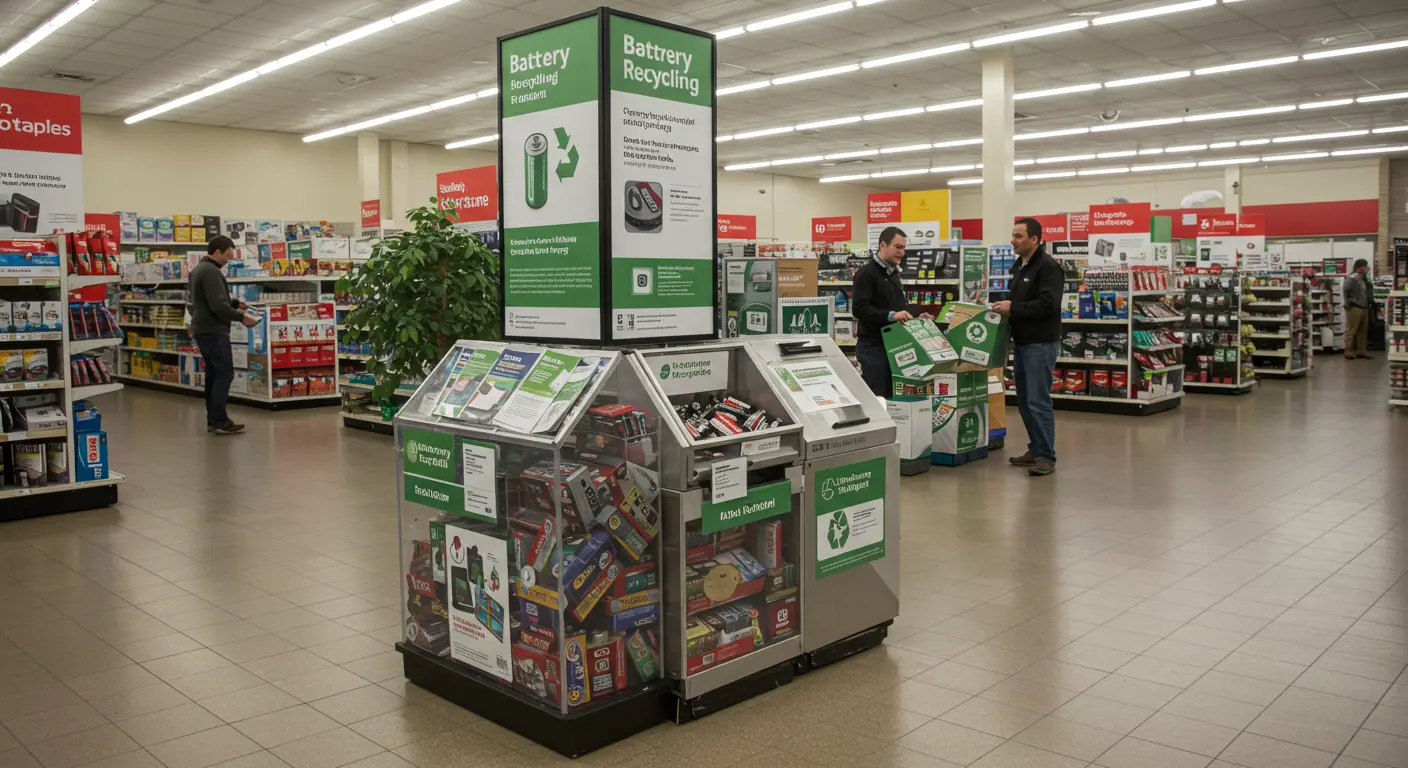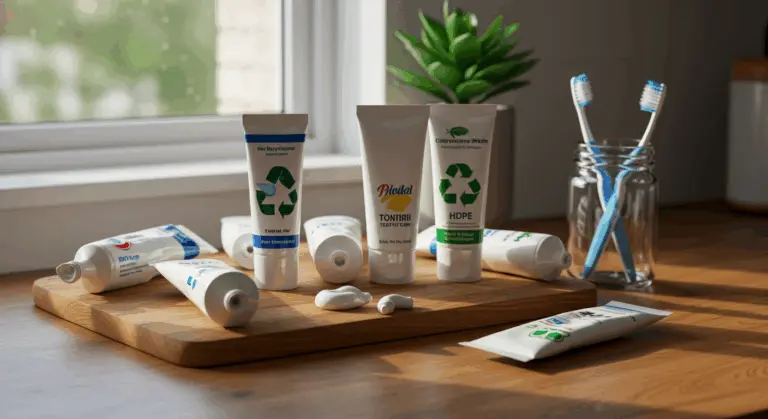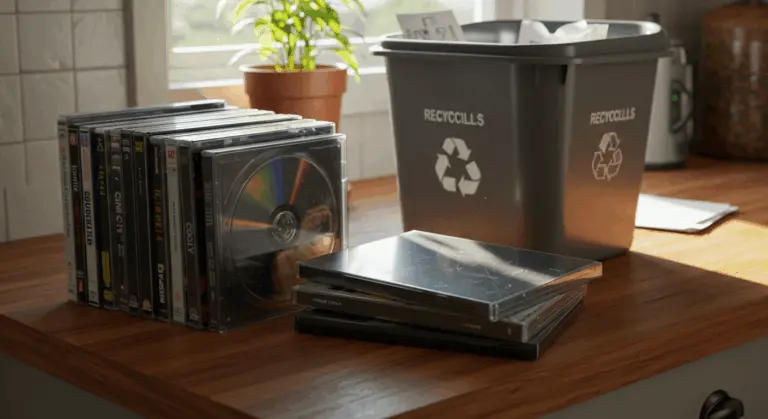Overview of Staples Battery Recycling Program
Staples has rolled out an ambitious nationwide battery recycling program across all 1,000 U.S. store locations. This initiative empowers consumers to dispose of used batteries conveniently and at no cost—a testament to the company’s strong commitment to environmental stewardship.
Customers can pick up a complimentary recycling box complete with clear instructions for safely storing various used batteries at home. When the box reaches capacity, simply return it to any local Staples store for proper recycling.
Through its strategic partnership with Electronic Recyclers International (ERI), a leading recycling organization, Staples ensures collected batteries undergo professional processing. This collaboration extracts valuable materials that are returned into the circular market, conserving valuable natural resources.
Additionally, Staples rewards customers with store credits for recycling batteries. This mix of convenience, environmental responsibility, and tangible rewards creates an effective approach to managing of battery waste.
Types of Batteries Accepted for Recycling
Staples welcomes a diverse array of common household batteries, making it a convenient option for responsible disposal. The accepted types span:
-
Lithium-ion batteries: Found in smartphones, laptops, and tablets. Their casings, glass, and metal coils are also recycled.
-
Alkaline batteries: Standard AA, AAA, C, D, and 9-volt types used in devices like remote controls and toys.
-
Rechargeable batteries: Including Nickel-Cadmium (Nice), Nickel-Metal Hydride (Nigh), and small sealed lead-acid batteries.
-
Button cell batteries: Used in watches, hearing aids, and other small electronics.
Staples provides detailed guidelines for preparing batteries before drop-off. Customers should tape the terminals of lithium-ion and certain other battery types to prevent dangerous short circuits. Each recycling box includes detailed instructions for safe sorting and preparation.
How the Battery Recycling Process Works
Once dropped off, batteries go through a detailed multi-stage recycling journey. This well-managed process transforms hazardous waste into valuable materials while improving resource recovery.
The journey begins with meticulous sorting by battery type. Why? Different chemistries demand specialized recycling approaches.
Next comes the controlled crushing or shredding phase, where external casings are carefully broken open. This happens within specialized environments designed to safely contain potentially harmful materials. Larger batteries may undergo precision hammering to breach metallic casings, while smaller ones pass through advanced shredding equipment.
Following mechanical breakdown, advanced sorting technologies separate materials. Valuable metals—lithium, cobalt, nickel, and copper—are separated from plastics and other components using sophisticated magnetic, density, and optical techniques.
The final stage sends these separated materials to specialized refinement facilities. Metals are processed for reuse in manufacturing new batteries or other products, while plastics and recoverable materials flow into appropriate recycling streams. Through Staples’ partnership with ERI, these materials return to the circular market, reducing virgin resource extraction.
Environmental Impact of Battery Recycling
Battery recycling provides significant environmental benefits. By diverting millions of batteries from landfills annually, Staples’ program reduces hazardous waste that would otherwise contaminate soil and water resources.
A major environmental advantage lies in recovering valuable, finite resources. Modern batteries contain critical minerals—lithium, cobalt, nickel, and manganese—elements growing increasingly scarce yet remaining essential for technological progress. Proper recycling extracts and reintroduces these materials into manufacturing processes, supporting a circular economy that reduces environmentally destructive mining operations. This resource recovery is especially important for elements like cobalt, which faces limited global reserves and often involves controversial mining practices.
The ERI partnership increases these environmental benefits through significant scale and efficiency. Together, they target preventing billions of batteries from entering landfills annually—batteries that would otherwise leach harmful chemicals into groundwater or trigger fires at waste management facilities. Their advanced recycling infrastructure ensures maximum material recovery with minimal environmental impact during processing.
Beyond waste reduction and resource recovery, battery recycling supports climate objectives by reducing the carbon footprint of new battery production. Manufacturing batteries from recycled materials typically demands significantly less energy than producing them from virgin resources. The result? Significantly lower greenhouse gas emissions. Consider this: recycling lithium-ion batteries can reduce energy consumption by up to 50% compared to mining and processing new materials.
The program also safeguards community health. By offering convenient recycling options, Staples prevents improper battery disposal that releases toxic heavy metals and corrosive materials into local environments. This community health protection represents an important benefit of structured recycling programs available at Staples locations nationwide.
Consumer Incentives for Participating in Recycling
Staples offers various incentives to increase participation:
Locations of Staples Recycling Centers
Finding your nearest recycling center is simple—use the online store locator on the Staples website or consult with partner Call2Recycle, which maintains a comprehensive database of drop-off points.
Most stores are located in convenient commercial locations with ample parking and extended hours. Trained store associates stand ready to guide you through the recycling process.
Future of Battery Recycling at Staples
Staples is planning for expanding its battery recycling initiatives. After successfully collecting nearly 1 million batteries last year alone, the company has developed a three-year expansion plan targeting significantly higher collection numbers. This growth strategy involves extending recycling infrastructure to additional locations, making proper battery disposal even more accessible nationwide.
Central to this plan is Staples’ strengthened partnership with ERI. This collaboration guarantees all collected batteries undergo responsible recycling, with valuable materials returned into the circular market.
Staples is also diversifying its sustainability partnerships to enhance its programs, collaborating with:
Through free, convenient battery recycling nationwide, Staples demonstrates its commitment to retail sustainability. As battery usage continues climbing, this expanding infrastructure is important for preventing hazardous materials from reaching landfills while recovering valuable resources.




